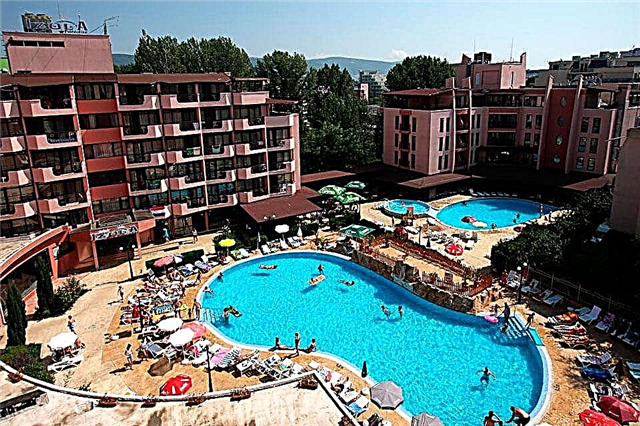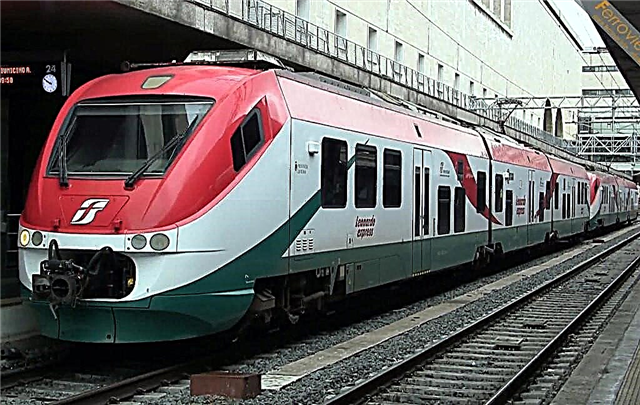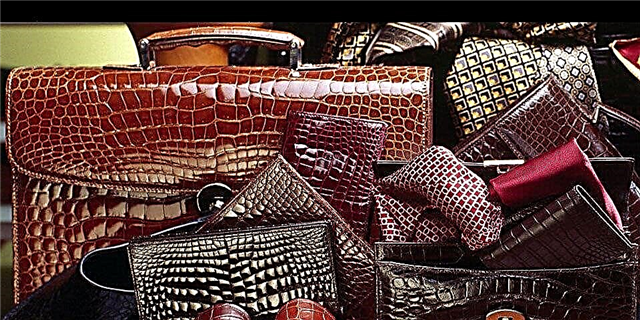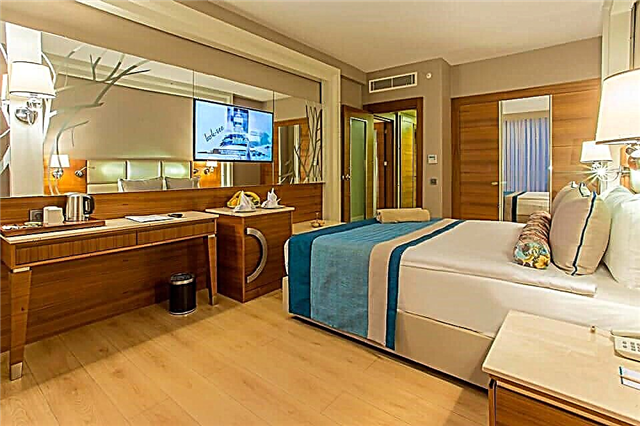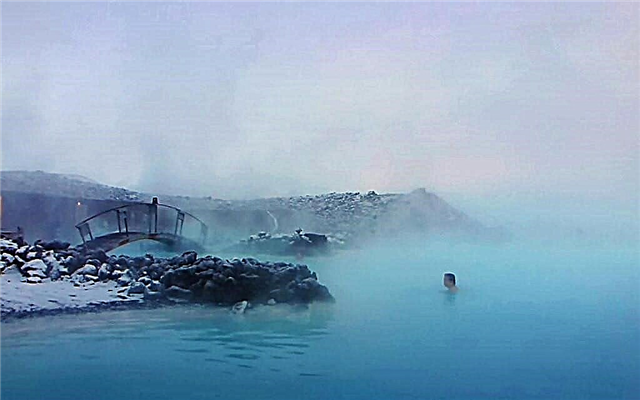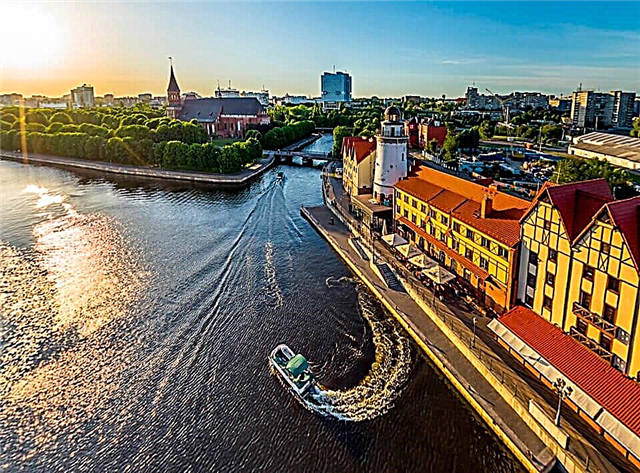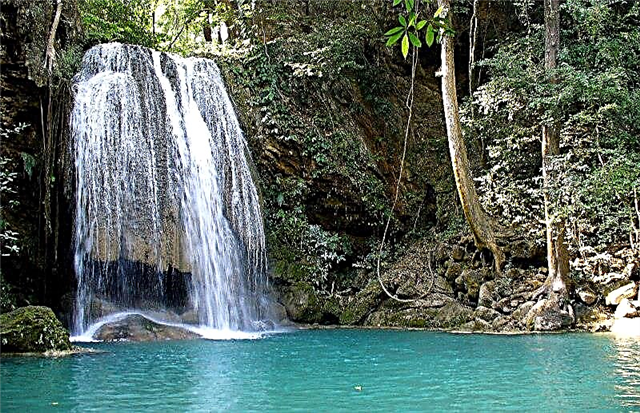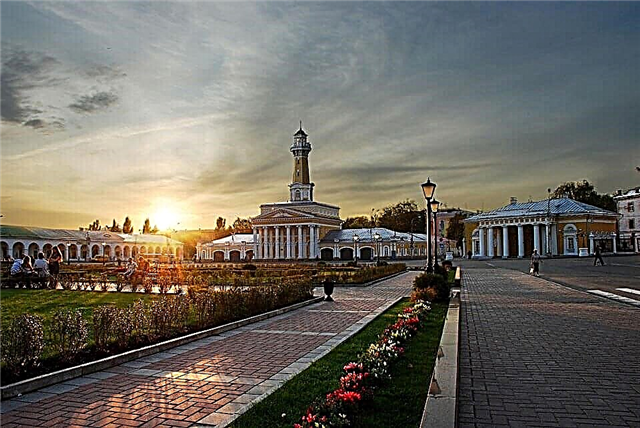What to see in Kostroma in 1 day? The excursion will turn out to be extremely rich and useful. Cultural attractions are concentrated in the historical center: when walking, you just need to walk some distance. And if the weather suddenly deteriorates, it doesn't matter: you can go to one of the exhibition complexes and continue exploring the amazing city there.
Susaninskaya square

It is central today. Initially, there was a posad on the high bank of the Volga. Artisans lived here, merchants traded. And at the beginning of the 17th century, the settlement turned into a New City. After the fire of 1773, which destroyed all the buildings of the New City, the construction of the square began according to the approved plan. The original idea of the architects was to give the building a rounded shape. But after a while, the decision changed: the area began to have pronounced edges.
Of course, there was a legend. When the building plan was submitted for approval to Empress Catherine, she bent down to get a better view of the presented masterpiece, and accidentally dropped an open fan. After that, the architect changed the concept: the square was shaped like a fan. Streets run down to its center from the outskirts, and a descent leads to the Volga, reminiscent of the handle of an empress's accessory.
The original name of the central part was in honor of the queen: Yekaterinoslavskaya. And so it was called until 1835: it was then that they began to call it Susaninskaya. True, the monument to the legendary peasant was erected later: in 1851. The guests of the city of that time noted the amazing beauty of Susaninskaya Square: they liked the cleanliness of the pavement, the neatness of the surrounding houses, wonderful fir and linden trees. Everyone noted the wonderful view of the Volga and at the same time of 9 street-rays descending to the center.
Unfortunately, the square was badly damaged in the first years of the October Revolution: the monument to Susanin and the Alexander Chapel were demolished, mature trees were cut down, and a square was laid out in the vacant place. Subsequently, there was a sports ground here. At the same time, a renaming took place: now the object was called Revolution Square. The previous name returned only in 1992. True, it was not possible to completely restore the lost image: a monument to the hero was erected in a new place, and a memorial plaque is located in the old one. But the view of the Volga is still amazingly beautiful, and standing in the center, you can admire 9 street-rays.
Borshchov House

This city manor is the largest in the city. And General Borshchov began to build it after his retirement. First, the outbuilding was built of stone, and then the main building. Members of the imperial family were received in the rich house: Nicholas I was visiting, and later Tsarevich Alexander. A fire in 1847 damaged the estate. The heirs considered the restoration costly and sold the ruins to the merchant Pervushin.
The latter reconstructed the house and invited the city authorities to purchase it to accommodate public places. The price was quite reasonable - 25 thousand rubles in silver. But as usual, the purchase was delayed. Pervushin raised the price, officials began to bargain. In 1857, the governor imposed a ban on the purchase, and used the reserved funds to build prisons in the province.
Pervushin, however, did not indulge in despondency: he organized a fashionable London hotel in his own house. The business brought the owner a stable income. But in 1870 the city decided to buy the estate. The building was once again reconstructed and the city court was placed in it. Today the manor delights guests with its restored facade. This is part of the Susaninskaya square ensemble.
Walk of Recognition

Initially, this place was just a wonderful alley for the rest of the townspeople. There are benches in the shade of the trees, the space is paved with colored tiles. But after a while, to celebrate the 855th anniversary of the city, the boulevard was reconstructed and began to be called the Alley of Recognition. It starts from Susaninskaya Square and continues to Mira Square. To the right and left of the resting place is Prospekt Mira (the longest street in the city).
Memorial plaques with the names of famous Kostroma residents are embedded right into the tiles:
- Yuri Dolgoruky
- Romanov Mikhail Fedorovich
- Fursov Petr Ivanovich
- Kaleria Gustavovna's Torop
- Boris Godunov
- Ivan Susanin
- Vorotilov Stepan Andreevich
Conventionally, the alley is divided into 2 parts: the first is dedicated to the famous Kostroma residents, and the second - to the heroes and participants of the Great Patriotic War and home front workers. The city authorities opened this segment for the 70th anniversary of the Great Victory over Nazi Germany. The Walk of Recognition is always crowded. This is a favorite resting place of Kostroma residents; tourists also willingly visit the cozy shady park.
Guardhouse

The building was erected in 1820. Several goals were set before the architect Fursov:
- the building should serve for the detention of arrested military personnel
- there should be a guard
- the building should be part of the Susaninskaya square ensemble and compositionally be combined with the Kalancha
- it was required to perpetuate the victory over Napoleon
- it was necessary to reflect the symbols of the royal dynasty of the Romanovs
The architect has completed all the tasks. The guardhouse had 1 full-fledged floor and a mezzanine: it organically complemented the Kalancha. S.S. was invited to decorate the facade. Povyraneva: he decorated the building with a portico with the monogram of Alexander 1, and at the same time depicted Russian weapons. The guardhouse existed in this form until the fire of 1847. The fire almost completely destroyed the building, but it was restored according to the surviving drawings. Subsequently, the guardhouse was supplemented with windows and an extension made of stone.
In 1918, the guardhouse ceased to be used for its intended purpose: there were alternately a bathhouse, a bank, a commandant's office, a children's library, and a Literary Museum. The building is a branch of the Kostroma Museum-Reserve: it houses an exposition dedicated to military history. The value of the Guardhouse is not only in its architecture: it contained the arrested participants of the December uprising, members of the People's Will organization, and freedom fighters in Poland. The guardhouse is an object of cultural heritage of Russia, it is protected by the state.
Fire Tower

The fire tower is included in the list of cultural sites of UNESCO. Kostroma was a city built of wood. Sources report 14 fires that completely destroyed all buildings. To prevent such incidents, Governor Baumgarten ordered the construction of a Fire Tower. This work was entrusted to Fursov.
The main task: to ensure control over fires in the city. Additionally, the mayor wished the building to become an element of the architectural ensemble of Susaninskaya Square. The construction turned out to be unexpected: the tower repeats the outlines of an ancient temple, decorated with 6 porticos. At a height of 35 meters, there was an observation deck, where a firefighter was on duty around the clock. In case of fire detection, he struck the bell and released a colored ball. If red, the center burned, blue - the outskirts. In the dark, the signal was colored fire.
The building was equipped with rooms for personnel, nearby were sheds for carts, and later for cars, barrels filled with water, equipment (buckets, axes, hooks) were kept. At the signal of a fire, firefighters immediately went to extinguish it. At the beginning of the 21st century, the Fire Tower became part of the architectural reserve. Now the unique building houses the Firefighting Museum. Tourists get acquainted with exhibits dedicated to the development of fire extinguishing. The exhibition is interesting for adults and children.
Romanov Museum

If the weather suddenly deteriorates, you should go to the Romanov Museum. This is an unusual place where old and modern are combined. At the end of the 19th century, the archival commission initiated the creation of its own museum. And the main part of the exhibition was to be the history of the Romanovs.
In 1903, the idea was approved by Nicholas 2. But the unstable political situation in the country postponed its implementation: only in 1909 the foundation stone was laid. The project was partially implemented: in 1913 the center was opened as a museum of the reigning house of the Romanovs. In May 1913, Nikolai 2 and his family became the first visitors to the exposition. They left a note in the memorial book.
Today the center offers its guests permanent expositions:
- Exhibition dedicated to the Troubles. Presented are the things of the boyars of that time. weapons, dishes. Described are 2 of the strongest dynasties of that time: the Godunovs and the Romanovs, who lived on the Kostroma land.
- An exposition dedicated to the etiquette of the past centuries. Here you can see dishes, clothes, jewelry from different times.
- Exhibition of Painting and Sculpture. Here you can admire the creations of Kustodiev and Chesnyakov.
In addition, the center organizes thematic exhibitions.
Assembly of the nobility

A special feature of the center is its lively atmosphere. All stands are carefully thought out and neatly organized. It seems to the visitors that the hospitable owner of the house will appear just around the corner. Not only tourists, but also Kostroma residents like to come here. The building was built in the 18th century by order of the merchant Durygin. Then, after dilapidation, it was bought by the city authorities. And at the beginning of the 19th century, the house was reconstructed.
The work was carried out under the direction of the architect Prave:
- window openings have been expanded
- wing completed
- the main entrances have been cut
- interiors changed
- added cast iron front staircase
- changed the decoration of the facade
Today, the center hosts regular and thematic exhibitions. Visitors will see:
- reconstructed life of the Russian (and Kostroma) nobility
- everyday life of different classes
All exhibitions have interactive applications, with the help of which visitors can fully immerse themselves in the events of centuries ago. The administration regularly arranges lectures on the history of the Kostroma and Russian nobility, holds thematic exhibitions for children and adults.
Drama theater. A.N. Ostrovsky

This unique theater was organized in 1808. The building was built in 1863 and has been preserved in its original form, with the exception of minor restoration and renovation of the interiors. During the war with Napoleon, the theater became a haven for the troupe of the Moscow Imperial Theater. The close proximity to the metropolitan actors determined the traditions of the theater.
For the first time in the province, Ostrovsky's plays were staged on his stage. For all the years of work, the audience saw all the plays of the playwright, with the exception of the Abyss. Maria Ermolova, Mikhail Schepkin, Valentina Fedotova shone here. The name of A.N. The Ostrovsky theater received in 1923, and in 1967 the bust of the playwright, which had previously stood in the Shchelykovo estate museum, was moved here. During the years of Soviet power, the theater named after A.N. Ostrovsky was awarded the Order of the Red Banner of Labor.

Since the end of the 20th century, the Ostrovsky Days festival has been held on the stage. At first it was held once every 5 years, now it is held annually. The best Russian theaters present their performances to the jury. Today, tourists can not only admire the building built in the style of Russian classicism, but also visit performances for children or adults.
Shopping arcade

Already in the 16th century, Kostroma became an economically important city of the Russian Empire. Trade became intense, and a place for merchants' shops was allocated in the city center. The buildings, of course, were made of wood. The fire of 1773 completely destroyed the shopping arcade. It was then that the city authorities decided to restore the shops in the same place, but already made of stone.
The blueprints of an architect from Yaroslavl Kler served as the basis for the working project. But the architects (Fursov, Metlin, Stasov, Vorotilov) linked the project to the area. The work began in 1775, and already in 1793 the work was completed. The merchants' shops were combined into a gallery.
Each shop had:
- 1st floor for trading
- storage cellar
- 2nd floor for organizing an office
The dimensions of the floor of one shop were 4.5mX7m. Each point was associated with a gallery arch. The first stage started working in 1791. These were the rows where red goods were traded: fabrics, leather, books, furs. When planning, it was necessary to decide how to fit the temple into the shopping arcade. But the architects coped with a difficult task, and now the gallery is adorned with the stone Church of the Savior in Riadi.
The red rows turned out to be so elegant that residents came here for daily walks. Subsequently, the architects erected Big Flour, Small, Gingerbread, Zhivorybnye, Fish, Meat, Leavened, Green, Oil, Saddlery, Vegetable rows. It turned out to be a whole trading city with its own descent to the Volga, the main route for the delivery of goods. The complex has practically not changed: it has survived to our time in its original form. And today trade is conducted here.
Museum "Provincial town of Kostroma"

Kostroma is interesting not only for antiquities associated with the development of the city, but also for new cultural sites. This is exactly what the “Provincial City of Kostroma” center has become. It is located in the very center of the city - Shopping Rows. A hundred years ago, small items were traded here. Therefore, part of the complex is called the Small Rows.
Tourists are offered an interesting exposition dedicated to the development of the provincial merchants. The stands show the genealogical trees of the most famous surnames throughout Russia, personal belongings, and home interiors. It is very interesting to get acquainted with advertising and marketing of the nineteenth century. Then the guests go to the hall with an interactive exposition. It is dedicated to the bell business.
The factory of the industrialist Zabenkin casted bells for the churches of the Russian Empire. The exhibition is supplemented by imperial tableware: lafitniks, damask, faceted bottles. And the most interesting thing is the souvenir shop. Here you can buy products of local artists, artisans, confectioners, gingerbread masters. And if you feel like grabbing a coffee, you should visit the local coffee shop, which serves a great drink.
Church of the Savior in Ryady

Inscribed in the Shopping Rows, it complements the architectural ensemble. For the first time in the documents, the temple is mentioned at the beginning of the 17th century. This place was called the market place near the Kremlin. The church was built of wood. But in 1766 it was rebuilt with the money of the merchant Stefan Belov: the temple became stone.
The church is dedicated to the Life-giving Cross of the Lord, although the people continued to call it Spasskaya. During the reconstruction of the Trading Rows, the temple ended up in the place where the Red Rows were being built. They did not dare to transfer it, the architects entered the building into the shopping complex. At this time, a gate bell tower was built, from which an amazing panorama of the Volga was opened. In the 19th century, the chapel of the Intercession of the Most Holy Theotokos was completed. It was heated, so it began to be used for winter services.
Still later, the territory was fenced off to separate it from the Trade Rows. After the October Revolution, church services were banned. At different times there was a museum and warehouses here. The bell tower was dismantled. At the end of the twentieth century, the building was restored and returned to the church. The architects carried out a large-scale work, since only 2 photographs have survived. Today the frescoes of the late 19th century are being restored.
Museum of Nature of the Kostroma Region

The complex was founded in 1958. Then it was a branch of the Kostroma United Museum-Reserve. In 2001, the collection of the center expanded significantly: therefore, it was decided to create an independent division. The exposition is based on the materials accumulated by the society for the study of the native land. The society has been working since 1912, collecting data on the nature of the province.After the October Revolution, unique collections were transferred to the city museum of local lore. In 1926, the center received as a gift the collection of the entomologist Rubinsky. The collection has become an adornment of the exhibition.
Visitors were also encouraged to view excellent dioramas:
- Capercaillie current
- Wolves attacking moose
- Polar owl
Later, the exhibition was supplemented with dioramas:
- Teddy bears
- Migratory birds
- Spring pond
In the halls there are interactive screens, with the help of which visitors can more fully explore the nature of the region.
Museum "Fairy Land of the Snow Maiden"

Everyone knows that Grandfather Frost constantly lives in Veliky Ustyug. And where does his beloved granddaughter live? Of course, in Kostroma! The fairytale house is located on the basis of the Istoki continuing education center. The employees and the administration did a tremendous job so that the guests fell in love with the homeland of the fairy-tale girl, so that they would want to come here again. The building of the center itself is a monument: it is a former Salt Shop, built at the beginning of the 19th century. Inside, visitors are greeted by a hospitable hostess who introduces the magical kingdom of Berendey.
Everything is there:
- magic dolls-amulets (at the master class you can try to make for yourself);
- the interior of peasant houses of the 19th - early 20th centuries;
- outfits of all provinces of pre-revolutionary Russia (they are shown by dolls from the collection of the artist Margarita Artamonova).
Children will not be bored: a separate excursion is organized for them, which is conducted by an experienced teacher. Meanwhile, their parents, under the guidance of another employee of the center, will be able to take a fresh look at the work of A.N. Ostrovsky.
Kostroma Kremlin

The first buildings of the Kremlin were located on the Sula River. But due to the regular raids of river robbers (ushkuiniks), the entire complex eventually settled on the high bank of the Volga: it was more convenient to repel enemy raids this way. The Assumption Cathedral was built on the territory of the Kremlin when Ivan the Terrible ruled. It was the first stone structure in the city.
This is what helped the cathedral survive the fire of 1773: the Zdvizhensky monastery, located nearby, was completely burned out, and in the Assumption Cathedral only the internal paintings were damaged. Unfortunately, the ramparts, ditches and walls have not survived: today you can see part of the eastern rampart. And in 1934, the Bolsheviks destroyed the entire temple complex of the Kremlin, and on the site of the planned monument to the 300th anniversary of the Romanov dynasty they erected a monument to Lenin (the pedestal prepared for the royal family was not shy about using the new government).
The square has become a favorite walking place for the townspeople. Work is underway to restore the destroyed Kremlin complex. The money is donated by philanthropists, caring Kostroma residents, city authorities. The reconstruction began with the construction of the Assumption Cathedral.
Central park

If, after walking through the historical center, you have a desire to relax in the fresh air, you should visit Central Park. He bears the name of the leader of the world proletariat, whose monument rises above the river. But the complex was broken long before the installation of the monument: in 1830.
The park is conditionally divided into 2 zones:
- an active leisure area with tennis courts and playgrounds, restaurants and tents for a quick bite;
- an area for secluded recreation on the banks of the Volga with shady alleys, benches, gazebos (this is where the playwright Ostrovsky's gazebo is located).

You should definitely stop at the observation deck: a wonderful view of the Volga opens from here. And then you should go down the stairs to the embankment to the pier.
Museum of jewelery art

It is impossible not to visit the Museum of Jewelery: after all, it was that land that gave birth to entire families of jewelers. The products of the masters were worn by noble persons and ordinary people, unique items made of gold and silver were ordered by Russian churches and monasteries.
The center has a permanent exhibition, where you can get acquainted with the technique of applying scanning, casting. Presented are the products of famous families of jewelers living in Krasnoe Selo. Thematic expositions dedicated to the works of modern jewelers are constantly held. And not a single guest leaves disappointed.
House of the mayor G.N. Botnikova

Gennady Botnikov is an honorary citizen. He ruled the city for 14 years. During his work, appeared:
- telephone
- library
- schools
- house of industriousness
And for his family, the mayor built a mansion in the center of the city. At that time, the house had a decent area: 350 sq. m. The philanthropist Kuzovlev proposed to restore the dilapidated building. According to the preserved descriptions and photos, 10 rooms have been reconstructed. And the furniture here is exclusively antique. There are no fences, so the guests have complete confidence that the owner has left for a moment, but will return soon.
Epiphany-Anastasiin Monastery

The Epiphany Monastery was organized by the Monk Nikita in the 15th century. All buildings were made of wood, so the complex was altered and rebuilt several times. And later women were added to it: Anastasiin and Holy Cross. It was in Anastasin that the miraculous Feodorovskaya icon of the Mother of God was kept. During the Troubles, the complex was plundered. And what the troublemakers did not do, the Bolsheviks completed: the St. Nicholas Cathedral, built in the 18th century, was blown up. Today you can admire the Epiphany Cathedral and the refectory.
Terem of the Snow Maiden

The magic girl, like Santa Claus, receives guests from Russia and neighboring countries. The way to her tower is easy to find by the funny inscriptions. But even if you don't read, you won't be able to get lost: tourists are constantly moving here.
And the Snow Maiden has something to do. For guests:
- Russian winter fun
- interactive travel
- workshops with local artisans
Gifts for friends can be purchased at the souvenir shop. Such a trip to visit a fairy-tale girl will be remembered by both adults and children.
Kostroma Sloboda

The idea of creating an open-air museum arose when the territory was flooded as a result of the construction of the Gorky hydroelectric power station. It became clear that the monuments of wooden architecture would also go under water. The first exhibit was the Church of the Transfiguration of the Savior, transported from the village of Spas-Vezhi. Then the exposition was replenished with the Church of the Most Holy Theotokos, originally built in the village of Kholm.

Today in Sloboda you can see baths, barns, shops. All buildings are allowed to enter. There are many people here both in winter and in summer. In autumn, the administration of the complex organizes Cabbage Evenings for guests. Tourists participate in the preparation of vegetables for the winter. Fermentation is made according to old Russian recipes. And for children, animators hold competitions in the fresh air.

